Turning back the hands of time – understanding the retro appeal of retrograde hands
Advertisement
Obsessions
Turning back the easily of time – understanding the retro appeal of retrograde hands
One of the most interesting things you tin observe on a watch face isn't even a complexity; it's a paw that snaps back to its original position at the end of its runway. And Swiss manufacturer Vacheron Constantin is amidst the all-time at making these.
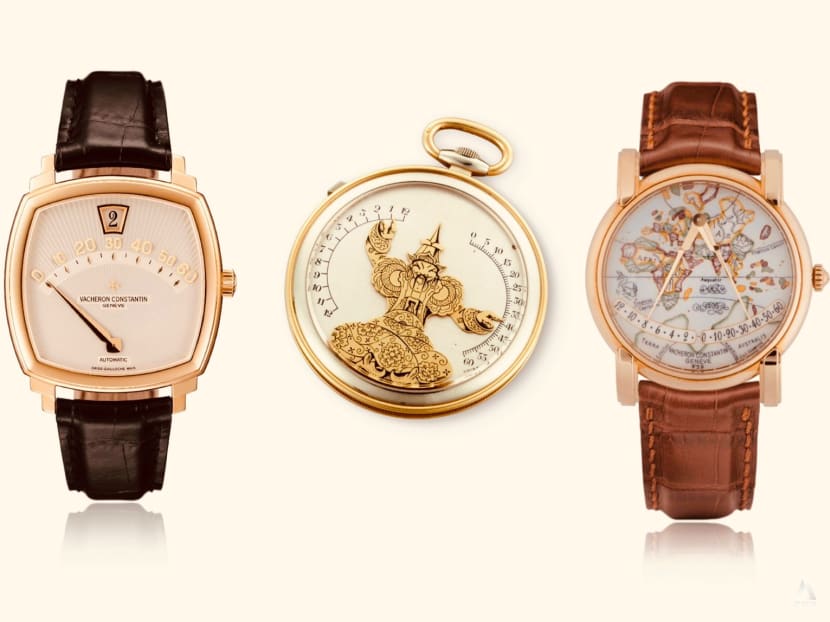
Vacheron Constantin was among the earliest watchmakers to employ retrograde indicators on its watches. (Photos: Vacheron Constantin; Art: Chern Ling)
29 Dec 2022 06:19AM (Updated: 19 Jan 2022 07:29AM)
The retrograde function occupies a unique place in fine watchmaking. It'south not a complication, but its advent unremarkably signals the presence of many others. The thought behind how information technology works is unproblematic – a manus snaps back to its original position at the stop of its rails – just its construction is anything but. Really, information technology's just a manus in a spotter face, only watching one work in tandem with everything else on the dial tin can exist incessantly fascinating to those who know of its history and significance. If you don't count among them, let the states to illuminate.
A retrograde indicator is basically a hand that doesn't make a complete turn around the dial, but instead returns to its starting point to outset all over. These are usually executed in an arc or semi-circle (though there are examples that utilize a straight line and a pointer) and can be used to indicate the time, date and power reserve.
The mechanism that runs it requires nifty precision as it has to shop plenty power to allow the mitt to make the instantaneous leap back to its original position and begin its journey once again at the same steady pace. Depending on the components, the indicator can return to its starting point at speeds exceeding 60km/h.

The earliest case was found in ane fabricated in Federal republic of germany in the mid-18th century, and information technology featured a retrograde date. Horologers somewhen found a manner to miniaturise them for pocket watches, and one such pocket scout from 1791, created by Maison Lepine in Paris, used a retrograde hour paw. It wasn't until the Roaring Twenties, with the Art Deco movement in full swing, that artistic imagination gripped the minds of watchmakers everywhere and inspired an era of unusual dials, with jumping indicators and retrograde hands condign a fast favourite.
Vacheron Constantin was really the showtime to offering retrograde indicators in wristwatches, but it had had enough of do playing around with a like mechanism first: The jumping hour. Like retrograde easily, jumping indicators require a sudden release of stored free energy to enable an instant shift. Information technology's why jumping indicators are often found together with retrograde ones. Vacheron Constantin's kickoff jumping hour pocket spotter was created in 1824, with jumping minutes offered shortly after.
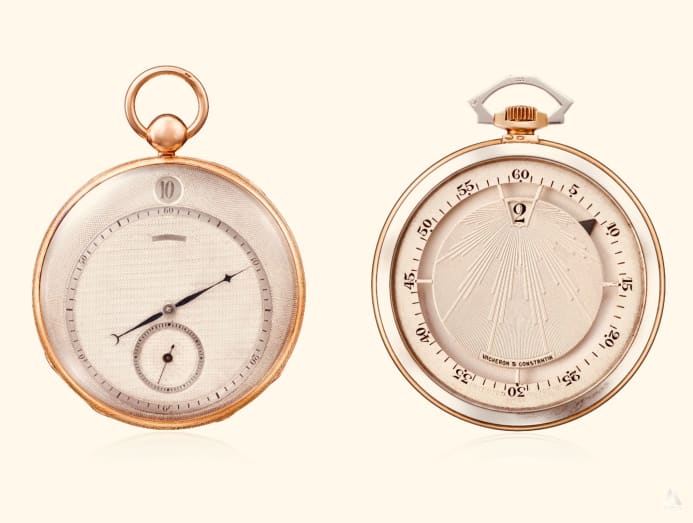
It would take another century before the brand could explore retrograde easily, and information technology has one Ferdinand Verger to give thanks for this accomplishment. In 1880, the Paris-based watchmaker was in charge of Vacheron Constantin's sales in French republic, and somewhen prepare his own example-making business there, which his sons continued under the name Verger Freres. The company continued its partnership with Vacheron Constantin until 1938, which resulted in numerous creations including shaped cases, aperture-blazon appointment indications, jumping hours and, finally, retrograde minutes.
These became the perfect tool for watchmakers to flex their creativity. Activate the pusher on the Bras en fifty'Air (Artillery in the Air) pocket sentry from 1930 and you will run into the arms of a Chinese magician – splendidly rendered in enamelled gold – rise upward to indicate the hours and minutes. Another featured jumping hours and minutes displayed below the punch by a manus where simply the onyx tip is visible.
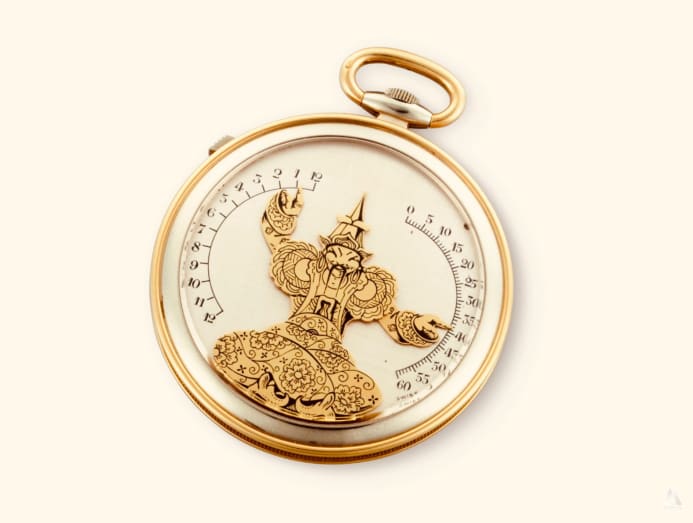
Only perhaps the most remarkable of these was the Don Pancho, a wristwatch commissioned in 1935 past a dealer in Madrid that took full advantage of Vacheron Constantin's know-how. The spotter needed to have a minute repeater, calendar indications and a retrograde hand – a tall society for a time when having multiple complications was a technical luxury only pocket watches could beget. Not to mention the combination of a repeater and a retrograde indicator had never earlier been seen in a wristwatch.
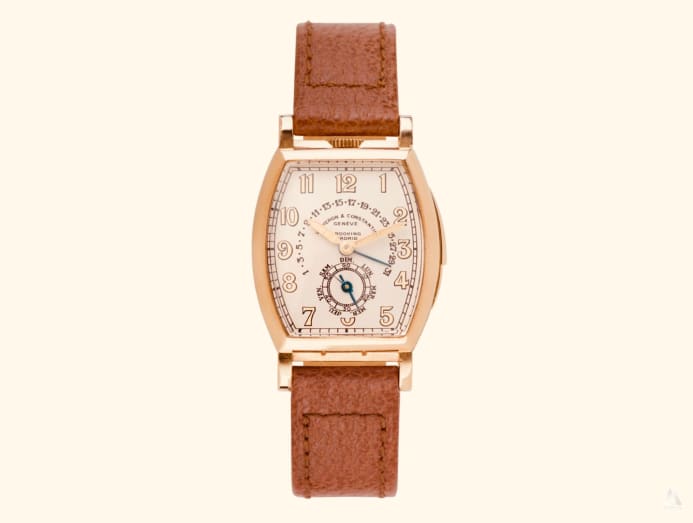
The last product was four years in the making, with much of the delays caused by communication difficulties during World War Ii and the Spanish State of war. (The client himself, a landowner by the name of Francisco Martinez Llano, even had to flee to Chile at one betoken.) Information technology had a yellow gold tonneau-shaped example, a crown at 12 o'clock, a infinitesimal repeater that chimed at deliberately low notes, twenty-four hours of the week within the small seconds sub punch, and date with a cardinal retrograde paw. The instance back bore the initials of its owner in blue enamel. The lookout came with v identical interchangeable straps, and was worn by Llano for seven years before he died in 1947.
The Don Pancho was lost within the family vaults for 60 years before it finally reappeared in 2010. It went nether the hammer in 2019, where it sold for CHF740,000 (S$1.1 one thousand thousand) at a Phillips auction in Geneva, making information technology the second-highest bid e'er for a Vacheron Constantin wristwatch.
Overall demand for special displays and unusual dials dwindled after the 1930s, merely those creative cogs never stopped turning at Vacheron Constantin. While the balance of the mechanical watchmaking world was still getting back on its feet post-obit the quartz crisis of the 1970s, Vacheron Constantin was already making eye-catching pieces like the Mercator, a compass-inspired lookout with a miniature painting of a map on the dial that was released in 1994 to laurels cartographer Gerardus Mercator on the 400th ceremony of his death. Three years afterward, it released the Saltarello, which had an enormous retrograde minute hand sweeping across a sunray guilloche dial.

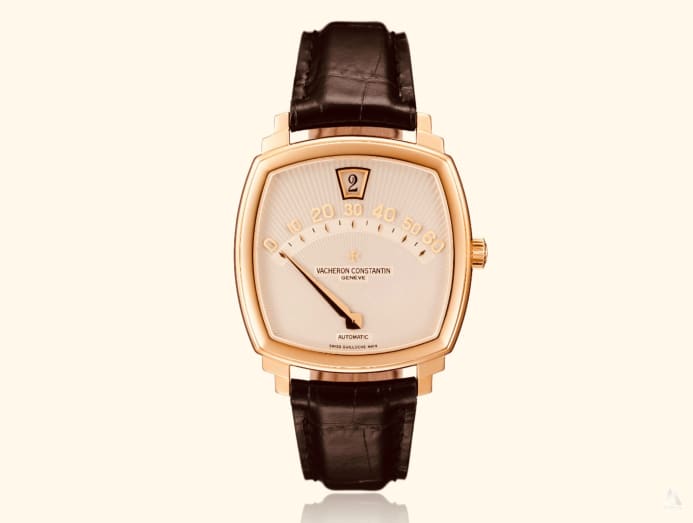
Before long, retrogrades made their way into Vacheron Constantin'due south current drove, starting with References 47245 and 47247 (with days of the calendar week and retrograde engagement) and the Reference 47031 (which added a perpetual calendar).
These examples emphasise the beauty of retrograde hands, just these quirky indicators are also have a applied application. Because retrograde indicators don't need to occupy a full circle, they leave plenty of room for other complications. It certainly helped when Vacheron Constantin needed to cram 57 complications into its Reference 57260 pocket watch in 2015, making it the nigh complicated scout in the earth at the fourth dimension. Among the many, many highlights of the watch was the rattrapante chronograph with double retrograde hands – another watchmaking first.
Compared to tourbillons and chronographs, jumping digits and retrograde easily don't make as large a spectacle, merely they practice add a little visual unpredictability. And in that location is something about watching these hands snap dorsum to the beginning, total of renewed energy and raring to become some other round, that makes them such a delightful metaphor for the coming new twelvemonth.
Source: https://cnalifestyle.channelnewsasia.com/obsessions/vacheron-constantin-watches-retrograde-hands-294861
0 Response to "Turning back the hands of time – understanding the retro appeal of retrograde hands"
Postar um comentário